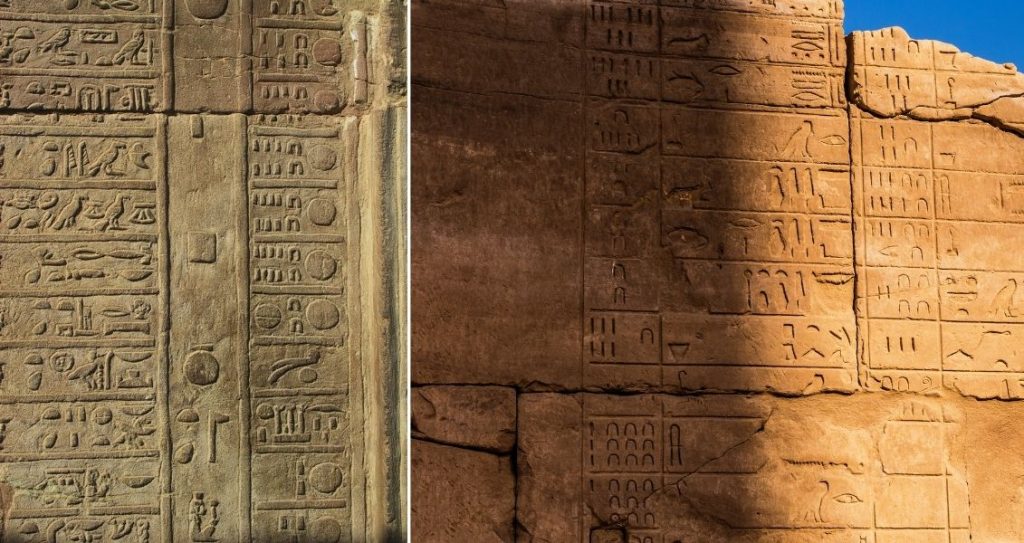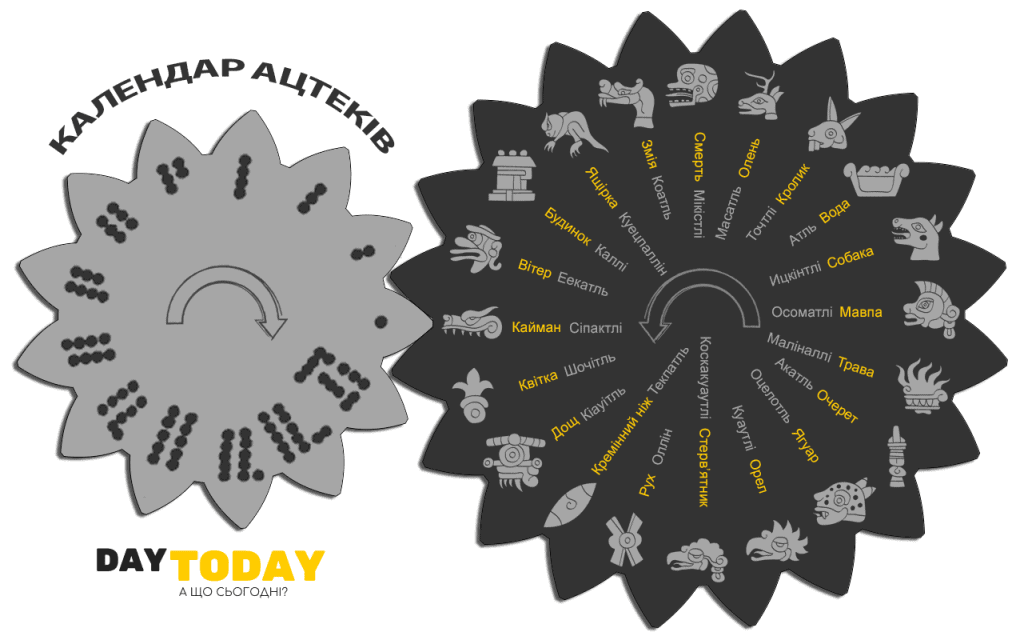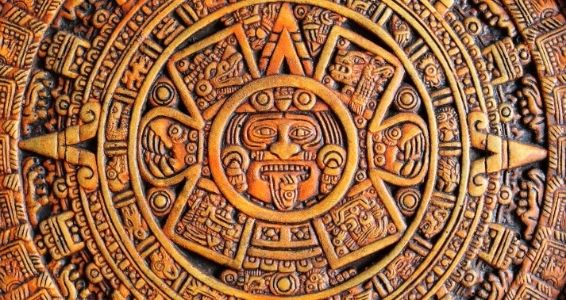Among the most favorite holidays, every child will name his birthday. Learning about the world, the baby gradually begins to understand the essence of such concepts as day, week, month, year. And now, in a premonition, the holy child already begins to count the days until the day when he receives gifts simply for the fact of his existence in this world. If the calendar didn’t exist yet, wouldn’t it be worth inventing one for the sake of it?
But what really was the first impulse of our distant ancestors in different corners of Oikumena on the way to the idea of a calendar and what prompted them to start counting days?
Long before the invention of the first calendar, mankind noticed the cyclic nature of natural phenomena: a bright day is replaced by a dark night, after a cold winter the long-awaited spring and summer begin. But while gathering and hunting dominated human economic activity, this knowledge had no significant practical value.
Everything changed with the advent of agriculture. Firstly, farmers had to determine the most favorable time for starting agricultural work, secondly, agriculture contributed to the production of surplus product, which allowed a part of people to change their daily physical work in favor of intellectual work. These factors became the prerequisite for the invention of the calendar, but what about the triggers of the idea?
Egypt
In Ancient Egypt, the leading star for the creators of the calendar was Sirius, the brightest star in the night sky.
Sirius is a cult star of the ancient Egyptians in the literal sense of these words. She was considered the personification of the goddess of the sky and the beginning of the new year, Sopdet or Sotis, as the ancient Greeks called her.
Ancient priest-astronomers established that Sirius periodically disappears from the starry sky for about 70 days and this is repeated from year to year at approximately the same time. From the only known historical document, which is an ivory tablet, it is known that the first morning appearance of Sothis after a period of invisibility (the so-called heliactic sunrise) was the harbinger of the flooding of the Nile and the beginning of the new year. The Nile flood was the guarantee of a bountiful harvest, which is why it was so important for the Egyptians to know by what time they should finish planting their crops.

The return of Sirius to the sky approximately coincided with the day of the solstice and was repeated every year after 365.25 days. Thus, the people of the pyramids laid the foundations of the modern calendar.
Scientists-Egyptologists and astronomers are still debating to which period the found tablet belongs, and therefore the date of introduction of the first calendar in the history of mankind remains unknown. The oldest date is called 4236 BC.
It should be noted that in addition to the official calendar, the Egyptians also had a lunar calendar, which was used to determine religious holidays or in personal correspondence. At the same time, the months of the lunar calendar did not correspond to the months of the official calendar.
The Sumerians
The mysterious people of the Sumerians created a developed civilization on the swampy lowlands between the Tigris and Euphrates rivers and carried out a real cultural revolution. The Sumerians invented writing, laid the foundation for school education, and developed a calendar that became the basis of the calendars of other peoples, some of which are kept to this day. For example, during the Babylonian captivity, the Jews borrowed the local calendar, which was the successor of the Sumerian calendar.
If among the ancient Egyptians the concept of “year” was closely connected with the star Sirius, then among the Sumerians, astronomy from the beginning did not play any role in the formation of this concept.
The cyclic nature of natural phenomena led the inhabitants of the Mesopotamia to an understanding of the annual period, but there are no mentions of determining the year based on any astronomical observations in Sumerian sources.
Therefore, the concept of the new year in Sumerian cities was used for administrative and economic reasons: as the beginning of the fiscal period (yes, taxes are also an extremely old idea) and the beginning of the agricultural annual cycle.
The length of the year in the Sumerian calendar was determined in months, the length of which depended on the lunar phases and was equal to 29 or 30 days, with an average of 29.5 days. As a result, the year according to the lunar calendar is about 11 days shorter than the solar year – 354 days. Therefore, to keep the beginning of the new year relatively stationary, the Sumerians added an additional thirteenth month in the middle or end of the year.
The Sumerian New Year coincided with the vernal equinox, but in the minds of the inhabitants of the Mesopotamia, these events were not connected to each other. The fact is that the climate of Sumer was distinctly divided into two seasons – a dry, hot summer and a cold, rainy winter. The dry season began in March-April, after the floods of the Tigris and Euphrates in November-March. As we can see, if in Egypt the new year began with the flooding of rivers, then in the neighbors of the country of the pharaohs, the new year was associated with the end of floods.
Harappan
To the east of Sumer in the Indus Valley, the third oldest civilization of the Bronze Age of mankind arose – the Harappan civilization. Since the Harappan script has not yet been deciphered, the ideas about the proto-Indian calendar and the reasons for its appearance are hypothetical.
It is known that the Harappan year consisted of two half-years – between the winter and summer solstice. In addition, the year was divided into six seasons, two months each.
Some scientists believe that the beginning of the new year was determined by the heliactic rising of the star Aldebaran, which in 3054 BC coincided with the vernal equinox. In time, after the heliactic rising of Aldebaran ceased to coincide with the equinoxes, it was replaced by the Pleiades.
Aztecs
Although the ancient civilizations did not have such intensive contacts as we observe today, it can be assumed that there was some interpenetration of ideas between them, including regarding calendars.
All the more interesting is the path taken in the development of the concept of calendars by those peoples who were isolated from the centers of the most ancient civilizations, first of all, the pre-Columbian peoples of America.
In December 1519, the famous conquistador Cortes returned to Spain with Aztec treasures. Among the looted wealth, his contemporaries were most impressed by a golden wheel with strange patterns and a diameter of two meters – the Aztec calendar.
The first date recorded in the Aztec chronicles corresponds to 1168 AD. In this year, the Aztecs began to use the calendar, which was widely used on the American continent for more than 1,500 years by the Mayan people, which had a huge impact on the development of Aztec culture.
Pre-Columbian peoples of America created an original calendar system with two calendars – ritual (sacred) and solar (civil). So far, nothing unusual – in Ancient Egypt there were also two calendars. And then it’s more interesting!
The ritual calendar consisted of 260 days. It had a magical basis and was used for predictions, and its cycle was not determined by astronomical observations. How exactly it arose and why it was equal to 260 days is still not known for sure. The Aztecs completely borrowed this calendar from the Mayans and did not change anything in it. The ritual calendar conventionally had 20 conventional “weeks” of 13 days each.
The ritual calendar is based on two basic cycles. The first cycle is a sequence of numbers from 1 to 13, and these numbers have no mathematical meaning. Each day was associated with a certain ruler of the day – “lord of the earth”, “goddess of the swamp”, “lord of the stars” and others. The second basic cycle of the ritual calendar consisted of 20 signs that had their own names: caiman, flower, rain, etc. Together with numbers from 1 to 13, these names formed 260 different combinations. Think of the ritual calendar as the interaction of two cogwheels: the first has thirteen cogs (the numbers from 1 to 13) and moves clockwise, and the second has twenty cogs (the names of the days) and moves counter-clockwise.

As you can see in the picture, the first date (first day) of the ritual calendar is the combination 1-Cayman, then the gears start moving and the second day is the combination 2-Wind, the third day is the combination 3-House, etc. After a full rotation of the smaller gear (with numbers), the date starts again with the number 1, but the second component is the name of the larger gear next in order: 1-Jaguar, 2-Eagle, and so on until the day all 260 combinations are formed.
The Aztecs celebrated the new year according to the solar calendar, which began after the heliac sunrise of the Pleiades in early February. Each year of the solar calendar had its own name within the 52-year cycle, which consisted of numbers from 1 to 13 and four symbols of the ritual calendar – house, rabbit, reed, flint (silicon knife).
The solar (civil) calendar contained 365 days: 18 months of 20 days each and five more “empty” days, which were considered unlucky. These days had no names and were not counted for the same reasons why in some modern countries there is no thirteenth floor. The duration of the months is derived by modern scientists from the Mesoamerican decimal number system. The names of the months reflected the agricultural and everyday aspects of the life of the Aztec society – “Detention of water”, “Bleaching of man”, “Drought”, “Return of water”, “Great holiday in honor of the gods”. Within months, days were numbered from 1 to 20.
This calendar had practical agricultural significance – in some Indian areas of Mexico, the cycle of corn cultivation (and the corresponding agricultural calendar) has not changed to this day.

Interesting fact
Many confuse the Aztec calendar with the so-called “Stone of the Sun” (pictured). In fact, it is a monolithic basalt disk with a symbolic image of the Aztec cosmogony and solar cult.
The solar calendar was also inherited by the Aztecs from the Mayans, whose astronomers calculated the length of the year to be 365.2422 days, which is a more accurate indicator than the length of the year in the modern Gregorian calendar. Therefore, it is believed that the Aztec calendar also had leap years – a sixth “empty” day was allegedly added every four years. But this hypothesis is unlikely to be true: although the priests were aware of the error, they did not adjust the calendar. As a result, over time, the names of the months, which originally denoted the names of agricultural works, lost their connection with the corresponding seasons.
In total, both calendars formed a 52-year calendar cycle of 18,980 days, each of which had its own unique identifier, which consisted of combinations of ritual and solar calendar dates.
The specified number 18980 is the least common multiple of the numbers 260 (duration of the ritual calendar) and 365 (duration of the solar calendar). By analogy with the gears of the ritual calendar, imagine gears with 260 teeth (for each date of the ritual year) and 365 teeth (for each date of the solar calendar). If you set them in motion, it will take exactly 18,980 revolutions (days) or 52 years to form the same combination of dates again.
Therefore, taking into account that in ancient times the average year of a person’s life was much less than today, we can say that for the average Aztec, every day was unique.
The end of the 52-year cycle was called by the Aztecs “the bond of years”, and the children born at this time were given specific names: boys were called Molpilli (“tied in a knot”), and girls – Tochiumolpilli (“our years are tied “).
So, the main triggers for the idea of a calendar, regardless of where they originated, were observations of natural cycles and the movement of celestial bodies. Humanity has long been drawn to the stars – they inspired not only romantics, but also pragmatists who used the movement of heavenly bodies to solve practical earthly problems, such as the number of days.
And although the example of Sumer shows that astronomical observations were not necessary for the development of the calendar, but societies with developed astronomy reached much greater heights and accurate results in chronology.
More interesting facts on our “Planet of Facts” in Telegram. Join in!
- About the author
- Other articles
- “Coca-Cola” is a success story, interesting facts – May 19, 2022
- Mr. Feynman is an outstanding physicist and a great joker – May 11, 2022
- Red poppies as a symbol of memory – May 8, 2022




































